Balkan Histories: Serbia's Story
Serbia’s history is always fascinating, often complicated and rarely without controversy. To gain a better insight into this fascinating past, read on for a brief synopsis of Serbia’s story, from its origins in Slavic migration to the present day.
16 Dec 19 · 18 mins read
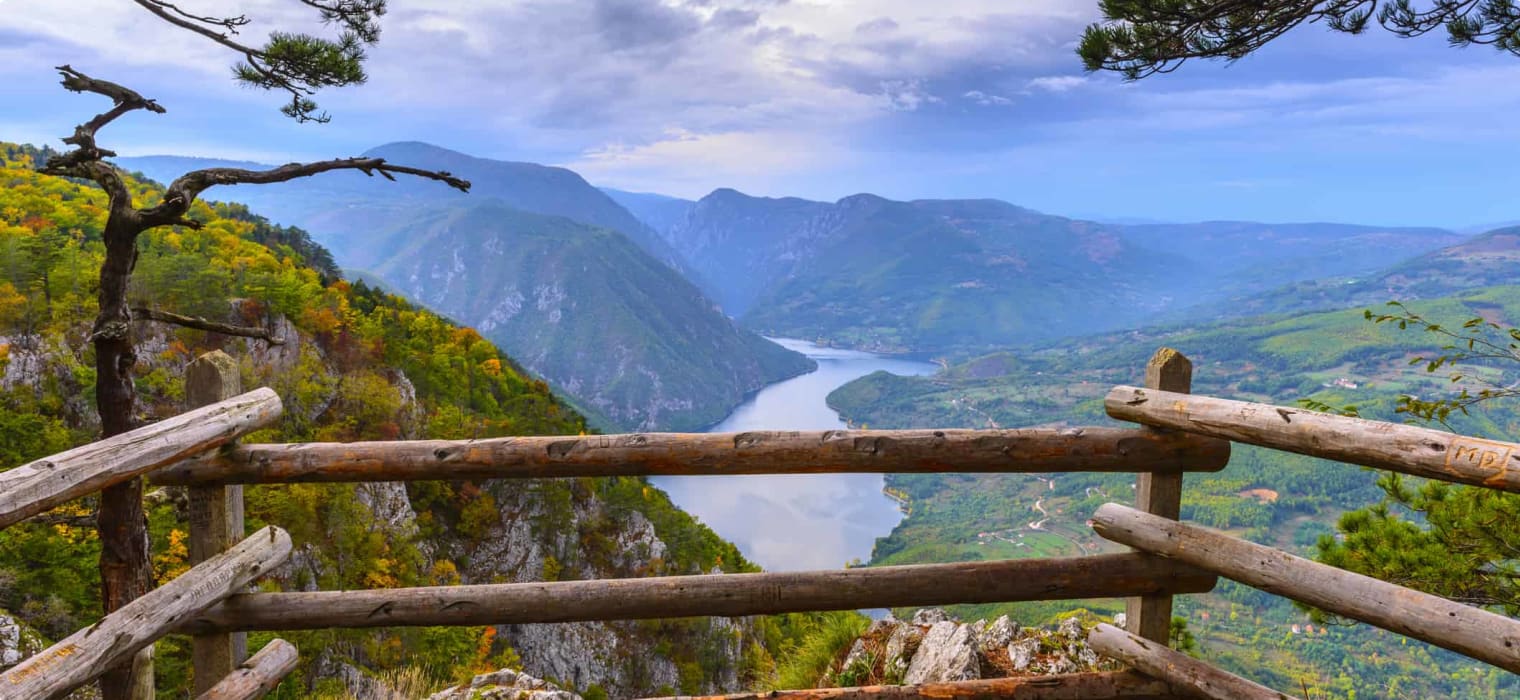
The Serbian Story
If you were to ask for a list of the best holiday routes in Europe, rarely would a tour of Serbia get a mention. The country has largely been forgotten by the average tourist, most of whom prefer to flock to more traditional destinations along the Mediterranean or Adriatic coastlines. But for the more intrepid, Serbia offers the chance to rediscover an area of the map that has been blacked out to Western tourists for so much of our recent history.
Before the series of tragic conflicts that rocked the region in the 1990s, Serbia was home to a burgeoning tourist industry, with luxury ski resorts, high-end restaurants and popular tourist routes. Even then, the majority of visitors were from neighbouring Balkan countries, as Cold War politics and the Iron Curtain prevented tourism from western Europe. Though peace and stability has returned to the region for almost two decades since the troubles of the 1990s, Serbia is still well off the radar of most tourists. As a consequence, Serbia has become a hidden gem in the Balkans, waiting to be rediscovered by a new generation of tourists.
Ringed by mountains and steep valleys, there is a reason why Serbia was the centre of Yugoslavian tourism. The country is home to a stunning array of natural landscapes; from snowy peaks to forested valleys and thermal springs, the geographical diversity is astonishing. Around 6% of the entire country has been given protected status, which has ensured the preservation of this mass of natural wealth.
Serbia was once on the great ancient trade routes than once ran through the Balkans, and the flavours of the many cultures that have passed through the region still linger in Serbian cuisine. From Greek and Byzantine staples to Turkish twists and central European favourites, Serbia’s palate is offers a unique amalgamation of tastes.
Perhaps most importantly, Serbia is a country that rewards those with a view for the past. From the nation’s very recent traumas to its distant presence in the myths of antiquity, the country is lined with stories and monuments from the past. Serbia’s history is always fascinating, often complicated and rarely without controversy. To gain a better insight into this fascinating past, read on for a brief synopsis of Serbia’s story, from its origins in Slavic migration to the present day.
The First Serbs, the Kingdom of the Serbs and the Medieval Period
The history of the Serbs in the Balkans begins around the 600 AD, when tribes of Slavic peoples migrated southwards in huge numbers into the old territories of the fallen Roman Empire. The tribes quickly settled into large agricultural communities, laying the foundations for the modern demographic make-up of the Balkans today. Four main Slavic groups emerged from these initial migratory tribes: Slovenes, Croats, Serbs, and Bulgars. Throughout this period, each largely recognised the hegemony of the Byzantines, the inheritors of the eastern Roman empire, over the majority of the Balkan peninsular. From within this power struggle, between Slavic tribes in the centre, the Pope to the west and Byzantine to the east, the story of the Serbs begins.
However, before we carry on into this story, it is important to understand that the history of Serbia in the medieval period is complicated in two senses. First, political borders in the Balkans were, like the rest of Europe at the time, constantly shifting under the weight of regular military campaigns. The Slavic kingdoms, which included the Kingdom of the Serbs and that of the Croats, were battling with each other, the Bulgars, the Byzantines and, eventually, the Ottomans. Further still, many names that we recognise today – Croats, Bulgar (Bulgarians), Serbs – were floating over territories different from their current homes. Kosovo, now predominantly Muslim Albanian, was the central homelands of the great Nemanjic Serbian dynasties; conversely the Bulgars once ruled over and predominantly populated Belgrade, the capital of modern-day Serbia.
Second, it is always difficult to try and connect the distant history of a region to the modern nation-state that now governs that territory. Though we can trace the lives of the ‘Serbs’, descendants from the first Slavic tribal migrations, this is not the same as tracing the history of ‘Serbia’. The ‘Serbs’ and ‘Serbian’ Kings of the Medieval period were not the first manifestations of modern-day Serbia. The ethnic divisions that have divided Balkan politics throughout the 20th and 21st century were far less significance in the medieval period. Religion was a far greater factor of identification and division across the Balkan peninsular. Serb Kings were more concerned with capturing Byzantine, the symbolic capital of eastern Christianity, than establishing an ethnic state. Though they are ancestors to modern Serbians, they would not understand the idea of ‘Serbia’ as we would.
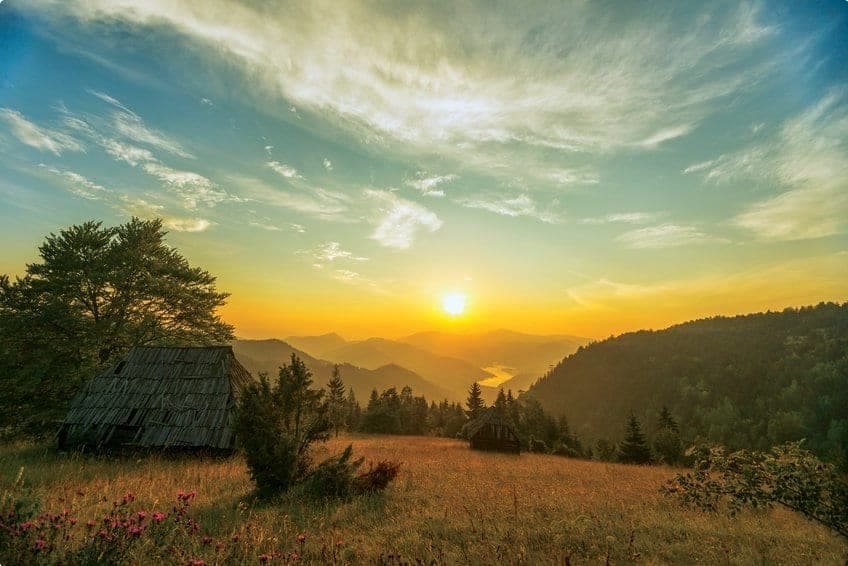
The rise of the Nemanjic dynasty, founded by the Grand Prince Stefan Nemanja in the 12th century, marked the first real ascendancy of the ancestors of the first Serb tribes. These Serb tribes, since migrating to the region, had largely been dominated by the Bulgars up until this point in history. However, the Nemanjics led the Serbs to dominate the Balkans, making the most of regional disturbance to the balance of power, as the Balkans were torn apart by tensions between the Orthodox Byzantium empire in the east and the Pope in Rome in the west. These tensions climaxed when the fourth crusade, an alliance of western European nations led by the Pope in Rome, decided to turn away from its prize of Jerusalem and plunder Byzantine’s capital, Constantinople, instead. On the periphery of this tragedy, the Nemanjic Serbs seized the moment, making huge inroads in Bulgar and Byzantine territories.
The Studenica Monastery, a UNESCO World Heritage Site, and one of Serbia’s national treasures, was constructed during this period of growth. It contains the Church of the Virgin, a stunning white marble construct, which stands as the defining legacy of the Raška form, a distinctive architectural style of the time that blended Romanesque and Byzantine aesthetics. The church was later imitated at Banjska, Dečani and the Holy Archangels of Prizren. The continental influence of the Studenica Monastery provides a window into the cultural blossoming that accompanied the Nemanjic expansion. According to the UNESCO website, “Monumental style”, ‘which emerged in various regions after the fall of Constantinople in 1204 to the Crusaders’ was ‘characterized by a new concept of space and a new expressiveness’ and became a ‘milestone in the history… of Western art.’
Just as Serb influence extended outwards, the effects of Serb prosperity also reflected inwards, as the first inklings of a Serb state were developed. Saint Sava Nemanjić, the King’s youngest son, composed the first literary work in the Serbian language around this time. These cultural achievements reflect the centrality of the Serbian Empire within Europe’s medieval story. For many born outside of the Balkans, this golden age of Serbian influence is an untold story. Luckily, many of the monuments and artifacts of this period are well preserved throughout the country, waiting to be rediscovered.
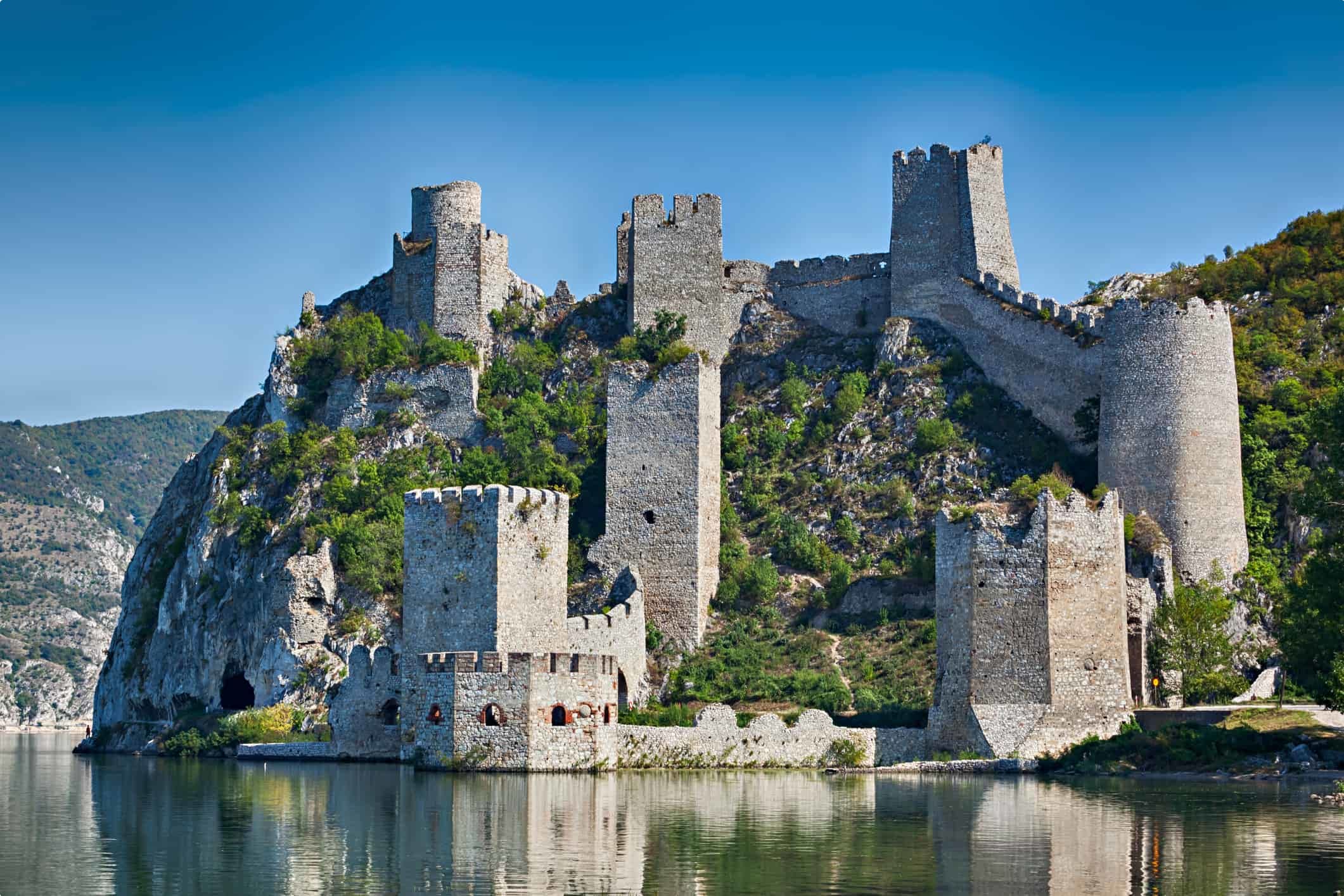
After a century of incremental gains, Stefan Dušan ruthlessly removed his father from the throne to become King in 1331. Dusan oversaw a expansion of Serbian borders, doubling the existing territories in what was the most prolific Slavic campaign of the Middle Ages. In 1346, Dusan crowned himself Emperor of the Serbs and the Greeks. By this stage, he had expanded his Serbian empire as far south as the Adriatic coastlines, as far north as the banks of the River Danube, and as far east as the Gulf of Corinth.
The Serbian rulers were primarily motivated to conquer Constantinople, to become successors to the Byzantine tradition of Orthodoxy and Roman Imperialism. Beneath these ambitions, ethnicity played little role; their territories were diverse and heterogenous, and little effort was made to create a specifically Serb majority. This is one of the main distinctions between medieval Serbia and the country’s more recent past, as the history of the latter as a modern nation state was heavily influenced by ethnic ideologies.
The Arrival of the Ottomans
The Ottoman’s arrival on the shores of the Balkans in 1357 was the beginning of the end of Slavic ascendency in the region. Although the glory days of the Serbian Empire were long gone, Prince Lazar Hrebeljanović, the self-appointed heir of the Nemanjic dynasty, had nonetheless forged a period of relative Serbian prosperity. The Prince revitalised Belgrade, constructing a castle and citadel – of which one tower still stands today – which stood in addition to the city’s more ancient defences.
As the Ottomans moved further inland, Belgrade became a haven for thousands of Balkan refugees, creating a blossoming regional centre, a status that has certainly returned in recent years. However, in 1389 the Prince finally set out to defend his territories against the rising Ottoman tide at the Battle of Kosovo. Despite unifying a strong Christian force behind him, the Prince was killed and his army routed, leaving the central Balkans open to Ottoman rule. In 1459, the final pocket of Serbian resistance in the fortified town of Smederevo fell to the Ottoman advance.
The city of Belgrade was one of the few areas to hold out longer than a few decades. At this point under Hungarian rule, the city’s immense fortifications held out against a number of sieges until 1521. When Suleiman the Magnificent finally conquered Belgrade that year, he burnt the city down and deported almost the all of the local population to Istanbul, to a place now known as the Belgrade forests. Their defeat ushered in a period of total Ottoman control of the Serb populated Balkans for almost four centuries.
Though Serb autonomy was utterly lost in the aftermath of these bitter defeats Ottomans, this period of history proved to be particularly fertile for Serbian nationalists in the 19th and 20th centuries. The Serbian Empire under the Nemanjic rulers was looked back on fondly, and many believed that the modern-day nation state of Serbia should mirror those medieval borders, a historical belief that was manifested in the brutal wars of the 1990s. Though killed in battle, Prince Lazar was seen by contemporaries as a martyr, and later fashioned into a national hero. The Prince was seen to embody the defining features of Serbian nationalism: he was an Orthodox Christian, a stalwart against eastern aggression and a military hero. His memory was kept alive for centuries, despite the total dominance of Ottoman rule, and he is still considered a national hero in Serbia today.

The Serbs under Ottoman Rule
Under Ottoman rule large numbers of Serbs migrated northwards to the security of the Kingdom of Hungary. Over the course of several centuries, the Hungarian monarchy offered Serbs land in return for service protecting Hungary’s border. The demographic impact of this migration was felt later on in the 18th and 19th centuries, as disputes arose between the majority Serbian population and the traditional Hungarian leadership. The region, now known as Vojvodina, was transferred from the ashes of the Austrio-Hungary to Yugoslavia after World War 1, and is now an autonomous province within Serbia.
At various points during Ottoman rule, ethnic Serbs rose up against their Turk masters. In 1593, 1683 and 1716, Serbs sided with foreign forces in war against the Ottomans. On all three occasions, the first and last allied with Austria, the second the Holy League, the Christian forces were defeated. In reaction to the first uprising, in 1593, the Ottomans publicly burned the church, sarcophagus and relics of Saint Sava in Belgrade. It is on the site of this tragedy for Orthodox Christians that the current Church of Saint Sava sits. Constructed after World War II, more than four centuries after the initial burning, it is among the largest churches in the world, towering over much of Belgrade.
Consecutive losses in all three wars pushed increasingly large numbers ethnic Serbs to migrate into the territories of her neighbours, as the defeat rebels retreated from Ottoman retribution. This is part of the reason why Serb populations are so scattered, and why it is so hard to identify a ‘Serb’ state in this period. Despite these struggles, a distinct sense of Orthodox Serb identity was kept alive during the five centuries of Ottoman occupation. Folk tales and popular mythology, such as the stories of Prince Lazar Hrebeljanović – often referred to as Tsar Lazar -, were passed down through generations. Though no such thing as a ‘national spirit’ existed during these times, these stories created the fertile ground for later nationalism campaigns.
The Ottomans exercised a relatively high degree of religious tolerance, and allowed non-Muslim groups to organise themselves within an independent millet, which was then entirely accountable to the regional Ottoman leaders. This in turn enabled the Christian Orthodox Church to form into a beacon of cultural independence and identity, distinct from their Muslim leaders, and other Christian groups. This identity was slowly compounded with stream of ideas from western Europe. The Enlightenment inspired figures like Vuk Karadzic to tour rural villages, where he attempted to build a cultural and linguistic self-awareness among the peasantry through epic poems and stories. In this way, the myths of Serbian kings, saints and knights, together maintained the sense of a separate Orthodox identity. Crucially, this identity was forged in contrast, and often in opposition, to the Serb’s Ottoman rulers and their non-Orthodox neighbours. This was to become problematic in later disputes, as – like most other popular forms of identity – the identification of a group through opposition with another was to provide a legitimizing undercurrent during later conflicts.
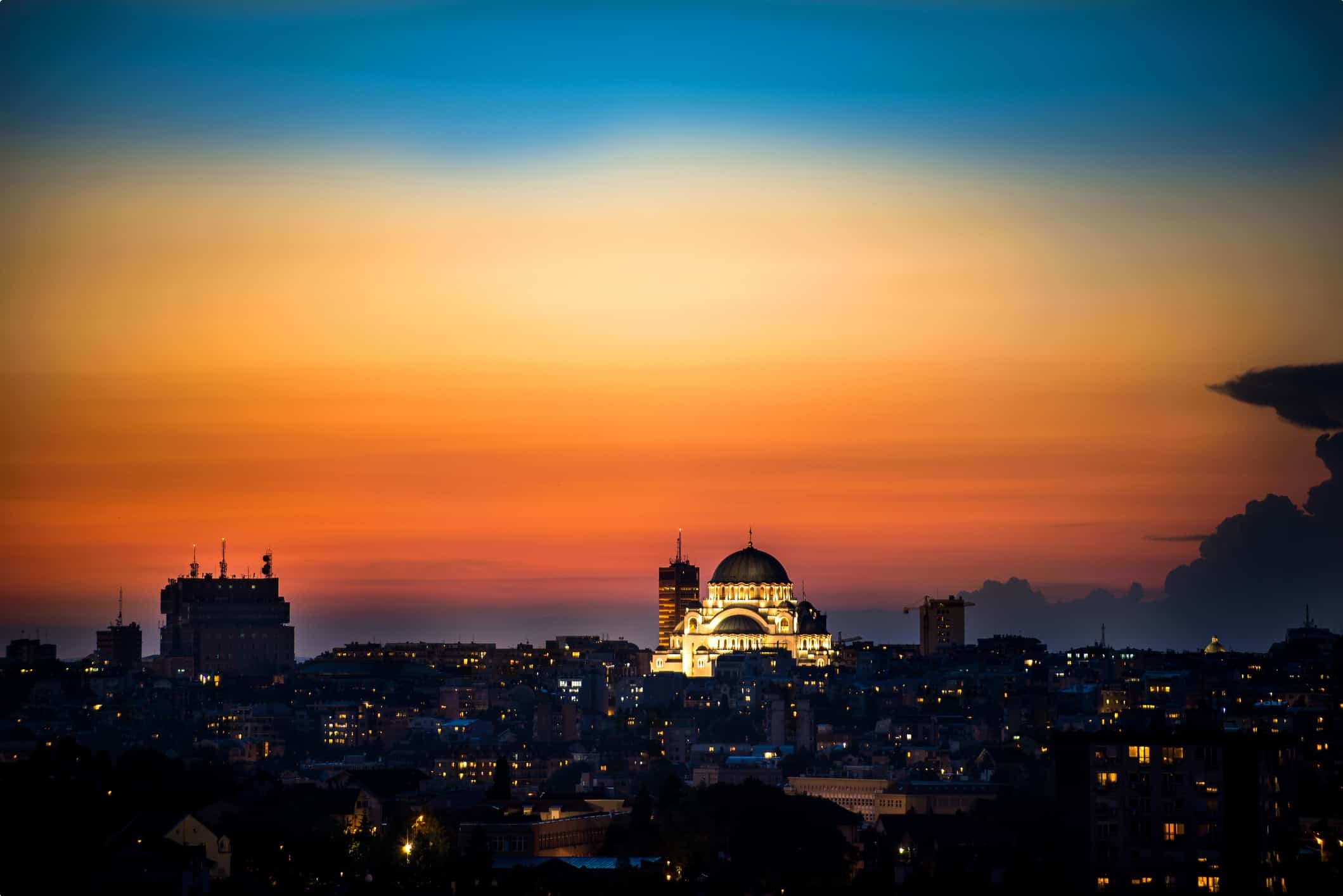
The Fall of the Ottomans and the Rise of Serbia
In 1789 the French revolution introduced the world to the ideas of national identity, alongside a violent strain of revolutionary republicanism, both of which swept through Europe like wildfire. These ideas were well received among members of the Serbian aristocracy and elite, who related them to their sense of Serb identity under Ottoman rule. Though these ideas were fundamentally important to the history of world, including Serbia, the actual campaign for independence was triggered by far more practical factors. For those involved in the events of Serbia’s break from Istanbul, the ideas of the French revolution pale in comparison to the strategic fallout from the rise of Napoleon. Napoleon’s conquest into Egypt in 1798 forced the ruling Ottoman Sultan to withdraw troops from the Balkans to manage this fresh threat on his African border. The weakness of the local rule in the Balkans, together with the coldblooded massacre of Serb Chieftains at the hand of Ottoman janissary soldiers, culminated in a peasant revolt around Belgrade in 1804. Importantly, the revolution was not initiated by grand ideas of nationalism, but rather motivated by popular dissent at the daily management of their lives by Ottoman leaders. The popular leader of the initial campaign, Black George, or Karađorđe, epitomised this sentiment. Now a hero in Serbian folklore, he was a livestock trader turned revolutionary leader, not a member of the educated intelligentsia.
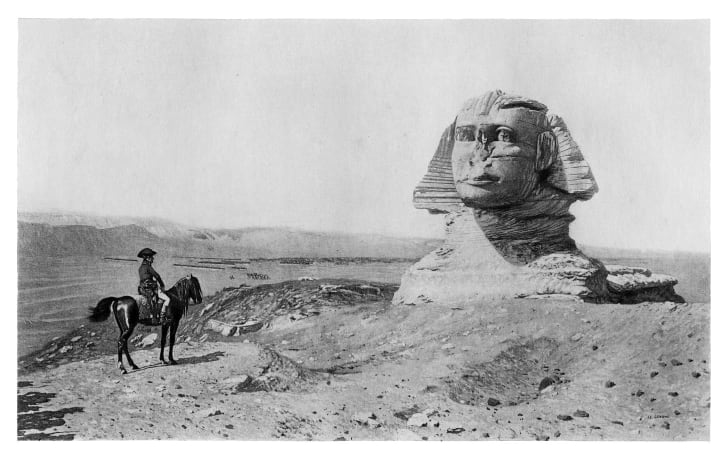
Following this initial uprising, the Serbian revolt waxed and waned over the next decade through open conflicts, peace settlements, Ottoman repression and Slavic resurgence. Eventually, in 1815 Serbian prince Milos Obrenovic won the autonomy of Serbia. Milos became supreme knez with authority to carry out the decrees of the Turkish pasha. After the Russo-Turkish War of 1829-1830 a new treaty gave Serbia complete control of her internal administration, and Milos became the hereditary prince. It is hard to call this a truly grass-roots ‘nationalist revolution’. Few people in the early 19th century would have appreciated the idea of a ‘nation’ in the modern sense. The majority of protests and violence were more concerned with the removal of Ottoman shackles than the aim of creating a unified state for the Serbs. The great poems and stories passed through the generations had maintained hope in resistance against the Ottomans, but not necessarily the drive to form a modern nation state. However, this is not to diminish the importance of the campaign against the Ottomans, and the first deal of concession made in 1815. For the first time in nearly five centuries, Serbia was now ruled by Christians. Serbia as a modern country was starting to come into focus, and both her identity and borders were to grow in strength over the coming century.
Serbian Nationalism in the 19th Century
The rest of the 19th century saw the consolidation of the Serbian state, nominally under the authority of Ottoman rule. This was undertaken in several ways, all dictated from the ruling class above to the wider population below. First, Serbian institutions were introduced to fill the vacuum left by the Ottoman withdrawal from the region. A bureaucracy and army were slowly formed, whilst the Serbian Orthodox Church was restored in full autonomy from the Greek Church. Second, schooling and education was introduced with the distinct goal of educating the wider population of Serbia’s history.
The capital city of Serbia was returned to Belgrade in 1841, and mass migration of Slavs into the city was matched by the exodus of Muslims back to other Ottoman lands. Belgrade came to epitomise the westernisation of Serbia in the 19th century. Engineer Emilijan Josimović re-imagined Belgrade, as he developed a new regulatory plan that led to the introduction of a grid street network in the city. This marked a clear break from Ottoman tradition, and the emergence of Serbia as a nation state. Josimović’s influence on Belgrade is evident even today. A walking tour through the city is the best way to appreciate this intersect of cultures, from Josimović’s planning to Slavic buildings and small pockets of Islamic architecture. Belgrade offers the rare chance to appreciate how the world around us has been constructed through waves of peoples, ideas and cultures, each believing that their mark would be the final addition to the urban masterpiece. After decades of relative stability, Serbia declared war on Turkey in 1877, and was swiftly defeated. However, Russia, acting in light of its shared Slavic heritage with Serbia and sense of geopolitical opportunity, decided to intervene in the conflict. Turkey was then defeated, and Serbia officially proclaimed an independent nation in 1878. However, the success of independence was to feel short lived, as the looming shadow of World War 1 was already beginning to find its roots in the late-19th century politics of the Balkan region.
Serbia in World War I
The story of Serbia in World War I is as complicated as it is controversial. On the 28th June 1914, Archduke Franz Ferdinand, the assumed heir of the Austrio-Hungarian Empire, was assassinated by five Serbs and a Bosniak. The assassination was co-ordinated in the hope that Bosnia would be stripped from Austrio-Hungarian empire, and integrated with Yugoslavia. In the eyes of the assassins, whose connection to a small group of Serbian officers is still contested, Bosnia’s ethnic Serb population was part of the natural territory of a Slavic state. The Austro-Hungarians were convinced of official Serbian involvement, and so issued the famous July Ultimatum, demanding a range of concessions from the Serbs. The Serbian government could not accept the full terms, and so Austro-Hungary, with Germany’s backing, started to mobilise her armies for war. A web of alliances had previously been spun throughout the region, and so as Germany mobilised with the Austro-Hungarians, so Russia did with Serbia, and France and Britain with them. By 28th July, 1914, the great European powers had sleepwalked into one of the most tragic events in human history.

As war raged throughout Europe, a fierce conflict was fought around the territories of the Kingdom of Serbia. Eventually, after a year of bitter fighting, Serbia’s last resistance was broken and the country conquered by Austro-Hungary and Bulgaria in 1915. This triggered the ‘Great Retreat’, wherein the King, his army and hundreds of thousands of civilians refused the terms of defeat and tried to escape through the Albanian mountains. Hundreds of thousands of Serbians made this journey in the hope of reaching the Adriatic coast, and allied assistance. However, the alpine conditions and snowy heights killed tens of thousands of Serbians, and is seen by some as the greatest humanitarian tragedy of the conflict.
Nonetheless, the bulk of the retreat survived to reach Corfu on the Adriatic coast, where close to 100 allied ships were used to evacuate the refugees. Around 120,000 Serbian soldiers were then sent to the Salonika front in Macedonia, where they fought a war of attrition against mostly Bulgarian troops. With the help of France at the backend of the war, the Serbian army started a devastating offensive, routing all opposition as they liberated their former kingdom on November 1, 1918. Serbian freedom had come at a terrific cost. According to the International Encyclopedia of the First World War, 30,000 Serbian soldiers were killed in action, 43,000 died in hospital, whilst close to 300,000 men were missing in action or captured as POWs.
Serbia in the Inter-War Years
The history of Serbia in the inter-war years is complicated, but helps to shine light on the ethnic make-up of the Balkans. World War I marked the death of the once-great Austro-Hungarian and Ottoman empires. The two empires had together stretched across nearly all of central Europe and the Balkans, and their collapse left behind a power vacuum in the Balkan region. To fill this gap, a new country was created from the embers of the two empires, modelled on Serbia’s pre-war vision for a united southern Slavic state. This state called the Kingdom of Serbs, Croats, and Slovenes, and it included the old Kingdom of Serbia as well as Croatia, parts of Austria and Hungary, and Bosnia and Herzegovina. After its success at the back end of World War I, Serbia naturally became the dominant force within this multinational state. The Serbian Karadjordjević dynasty was given considerable authority, as it ruled over the entire union through a power-sharing deal with an assembly of ministers. However, King Alexander I had greater designs, and in 1929 he dismissed the assembly, and name his new royal dictatorship ‘Yugoslavia’, literally translated as “Land of the South Slavs.” Though Serbia’s position slowly strengthened, Yugoslavia as a union looked increasingly fragile at tensions escalated in Europe during the 1930s. The other ethnic groups, particularly the Croats, were angered at their lack of representation within the Serb-dominated state. Though reforms were enacted in 1939 to increase regional autonomy, we will never know how the state would have fared, as World War II marked the end of its brief history.
World War II
In 1941, Hitler ordered his forces into Yugoslavia. The Nazis overwhelmed local resistance and quickly established their control of the region. Two underground resistance groups emerged against the Nazi occupation: the Yugoslav Partisans, a communist guerrilla group, and the Chetniks, a pro-Serbian organisation. Though Partisans, led by Josip Tito, led one of the largest and most effective resistance operations during the war. However, the Partisans and Chetniks soon started to turn on each other, to the extent that, that the conflict has since been labelled ‘the Serbian civil war.’ The Axis powers eventually retreated from Serbia in 1944, and Yugoslavia as a whole by 1945. Tito rode the momentum of his successful guerrilla campaign, and with the backing of his extensive military machinery he quickly seized control of the old Yugoslav territory. Towards the end of 1945, a victory in a republic-wide election cemented Tito’s control of the country; an unsurprising outcome given only his National Front party appeared on the ballot. By 1946, the new-look Socialist Federal Republic of Yugoslavia was announced to the world. The Republic was a mirror image of the federal structure of the USSR, only smaller with 6 republics rather than 15. At the head of each structure was an equally dictatorial patriarch, with Tito replicating Joseph Stalin’s personal control of the USSR.
Tito and the Socialist Federal Republic of Yugoslavia
Tito ruled over the Socialist Federal Republic of Yugoslavia. He was deeply popular in the country, portraying himself as the paternalist guide to an otherwise divided country. The violence of the 1990s, together with recent economic strife, has generated a phenomenon of nostalgia for the days of Tito’s leadership. One poll revealed that as many as 81 per cent of Serbians believe they lived best in the former Yugoslavia -“during the time of socialism”.
The ethnic divisions that had haunted the first Yugoslavian state were, according to the state, subverted beneath the greater power of Communism’s supranational ideological outlook. In truth, Tito’s state offered citizens a peaceful compromise to the vicious inter-ethnic conflicts earlier in the century, whilst offering relative regional and ethnic autonomy. This proved to be relatively popular both within Yugoslavia and across the western world. Though Yugoslavia was at first a heavily centralised state, Tito slowly diverged some power to local regions, given greater agency to the range of ethnic groups the state presided over. However, Tito’s legacy is still heavily contested. For many, the story of Tito as the peaceful unifier of the Balkans belittles the many thousands that were killed during his rule. Despite this controversy, it is clear now that the death of Tito in 1980 marked the descent into terminal decline within Yugoslavia. The loss of Tito’s central leadership, replaced by ineffective councils of leaders, together with the long-term effects of decentralisation, made hopes of a multi-nation state increasingly untenable.
The Fall of Yugoslavia, the Return of Serbia and the Horrors of War
By 1990, in step with the dramatic changes sweeping through the USSR in Europe, Yugoslavia held its own elections. The elections released a lid on tensions that had been growing in Serbia for over a decade since Tito’s death. Serbia’s intelligentsia and Slobodan Milosevic’s Serbian Communist party allied together in the hope of forging a ‘unified Serbia’ from the fragmenting Yugoslavian state. Here, history played lead role as the Yugoslavian countries descended down the road to conflict. Milosevic brought Serbs’ memories back to the medieval Serbian Empire, falsely grounding an ethno-centric military campaign in a tradition of medieval expansion that had been predicated on non-ethnic grounds.
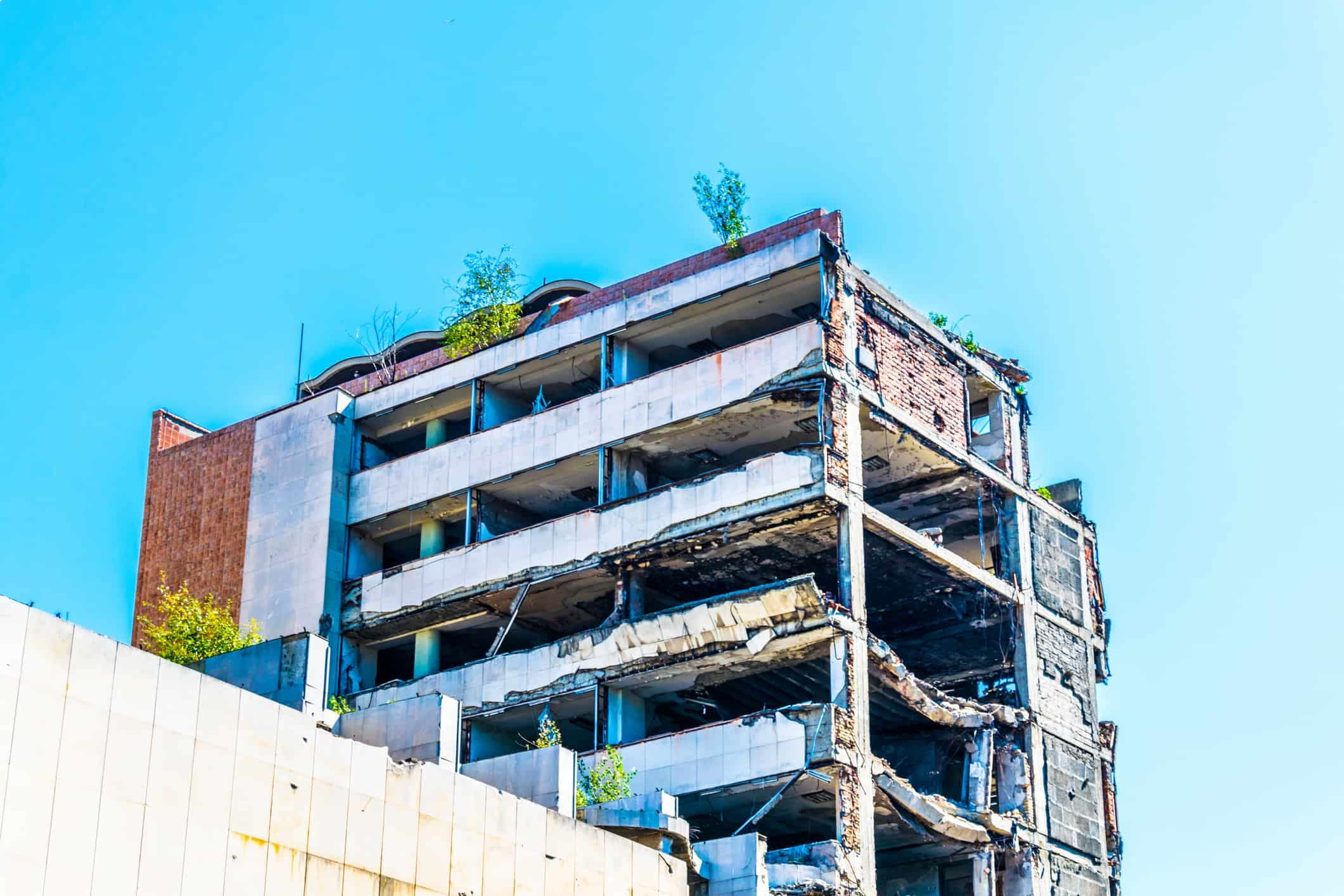
Throughout the 1990s, Milosevic led campaigns during the Yugoslav Wars to fight for the unity of Yugoslavia as a means to expand Serbia’s control over the region. After a brief conflict, Slovenia’s exit from the union was accepted with relative ease. However, attempts at independence in Bosnia and Croatia were not accepted by the Serbian government. Both countries had large populations of ethnic Serbs, many concentrated in regions that themselves refused the idea of independence and wanted to join Serbia. From this political and demographic mess emerged some of the most brutal ethnic conflicts in recent history. The conflict was most costly in Bosnia, where Bosnian Serbs, supported by the central Serbian government, fought against Bosnian Muslims and Bosnian Croats. Over a hundred thousand people died, and catalysing a period of deep self-reflection in both the Balkans and the West, due to the extent of the tragedy and the failure of the UN to prevent the slaughter. By the start of the millennium, Serbia had been beaten back from most of Bosnia and all of Croatia and Kosovo, to its original borders around the old Kingdom of Serbia.
The Republic of Serbia in the 21st Century
The violence of the wars throughout the 1990s left deep scars the Balkan region. In 2002 Milosevic was tried on charges of genocide and war crime in the Hague, which continued until he died of a heart attack in his prison cell in 2006. 2010 saw several moves of reconciliation, with the Serbian government and Prime Minister offering several official apologies for mass-murders in Bosnia and Croatia. Serbia, like the rest of the Balkans, has had to embark on a challenging set of reforms, to both lift the regional economy, and heal the divisions of earlier conflicts. As a consequence, Belgrade has re-emerged as a welcoming and lively modern metropolis, central to the region’s overall development. Serbia is currently taking steps towards integration with the EU, which would cap off a remarkable turnaround since the Balkan wars.
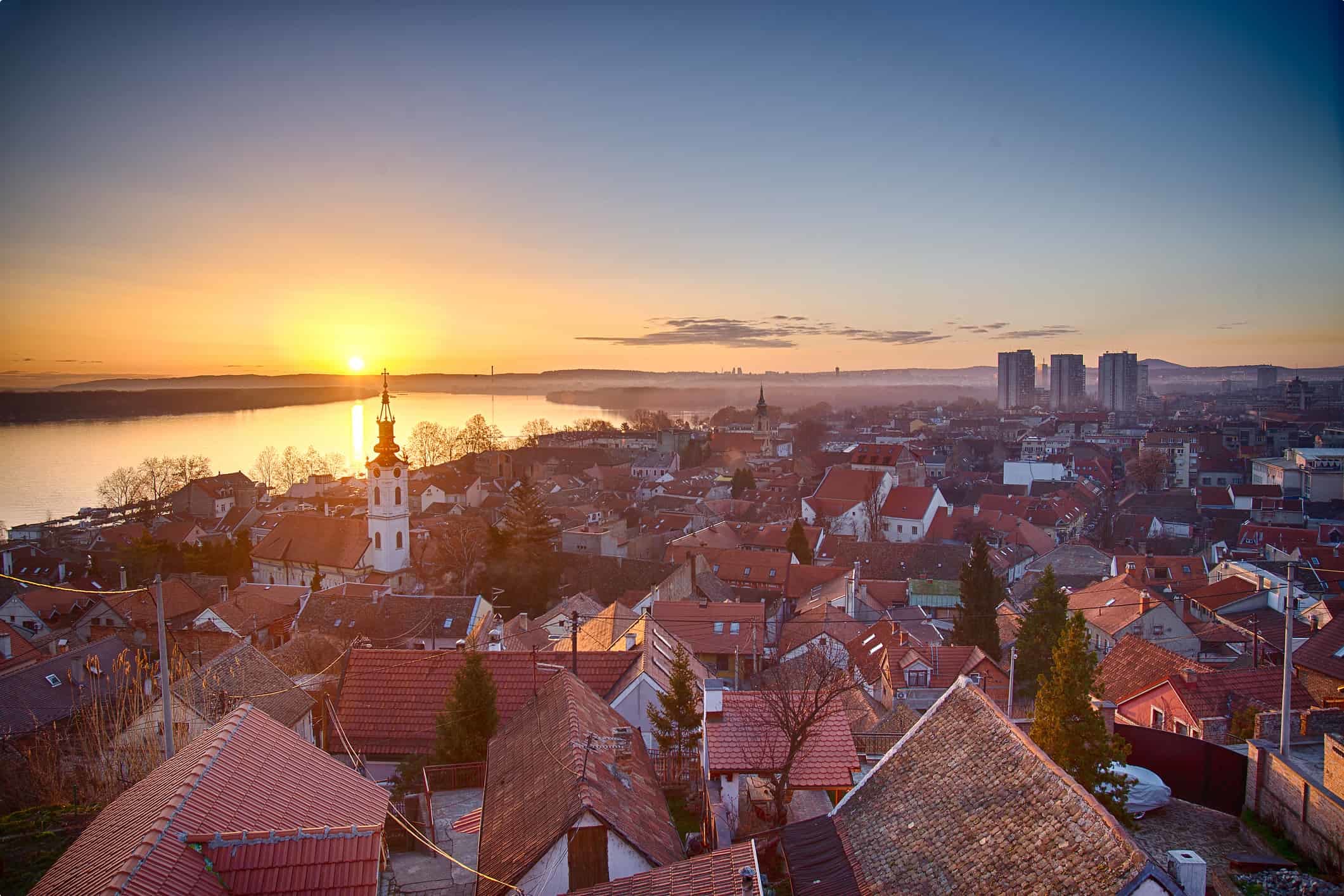
FAQs
Does Odyssey Traveller run a tour to Serbia?
Yes! Odyssey travel offers a tour of Serbia on the route of our Balkan holiday experience, which travels through the region’s major cities. The group tour starts in Dubrovnik, near the stunning Dalmatian coast in Croatia. On day four the group crosses the border and arrives for a tour of Serbia. The first stop is Belgrade, where the group can embark on a city tour, before weaving through the rest of the country.
Related Tours
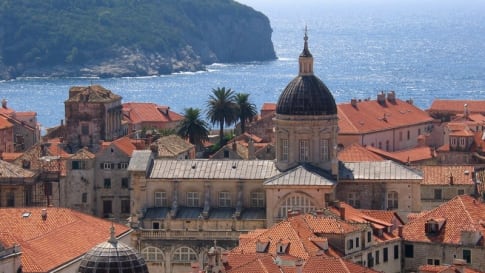
19 days
SepBalkans escorted small group tour
Visiting Albania, Bosnia and Herzegovina, Croatia
An 19 day small group tour tour takes you deep into the the Balkan Peninsula. Starting in Dubrovnik, travel through Croatia, Bosnia & Herzegovina, Serbia, Macedonia and Albania before returning to Dubrovnik.
From A$13,195 AUD
View Tour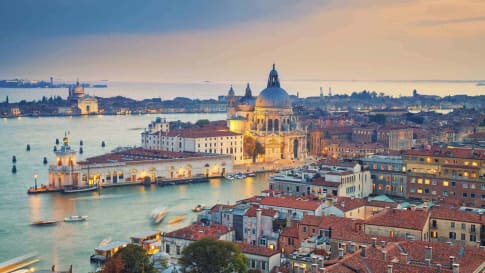
27 days
DecEuropean Cities Small Group History and Cultural Winter Tour
Visiting Albania, Croatia
An escorted tour A Journey that commences in Rome and takes in 12 destinations along its journey to Athens. This is an off season small group journey with like minded people. A small group tour across Southern Europe with local guides sharing authentic in-country authentic experiences for mature couples and solo travellers.
From A$17,295 AUD
View Tour
19 days
AugHistory of Croatia small group tours for senior travellers
Visiting Croatia
Spend 19 days touring Croatia, starting in Zagreb then travel south following the coast, where trade and the influences of the outside world made its mark. Travelling with like minded people in our small group we will explore the country in depth with great local guides and stay in key historical area such as Porec, Zagreb and Dubrovnik.
From A$14,995 AUD
View Tour


